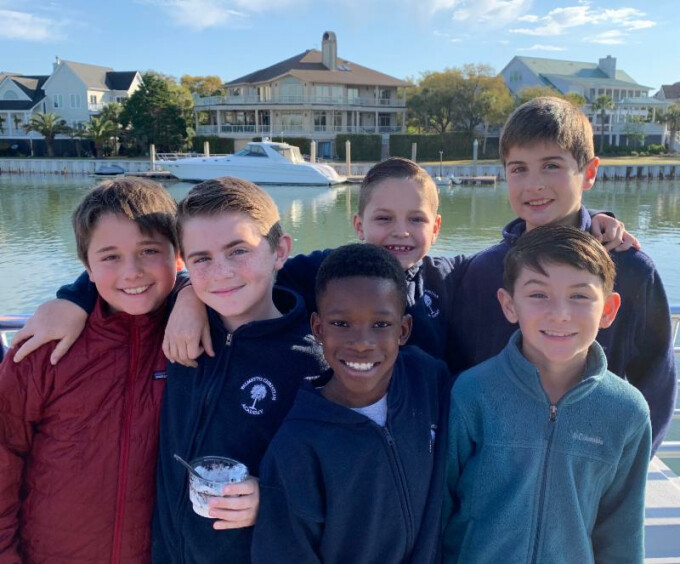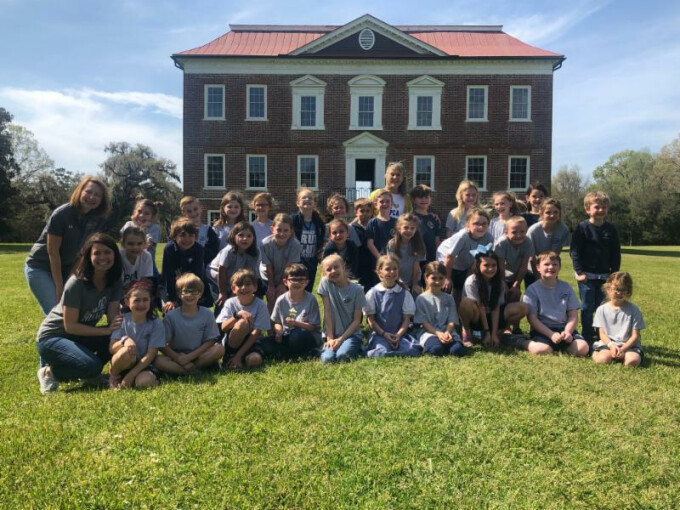STEM: Exploring Dewees Island And Its Habitat

Imagine a delightful 20 minute ferry ride where you catch glimpses of dolphin, bald eagles and alligators! It wasn't imaginary for several of our 3rd grade students - they enjoyed a super fun and educational field trip to Dewees Island last week.
Once they arrived on the barrier island, they began their discovery of the salt marsh, maritime forests, and beach habitats, as well as many of the organisms found within. The students learned about human and animal habitat and how Dewees Island is building and living in harmony with nature. The Nature Center provided a special experience for the children to view unique exhibits including an alligator skeleton, a pygmy sperm whale skeleton, and live animals. One of the students' favorite parts of the trip was singing to periwinkle snails, which caused them to come out of their shells!

